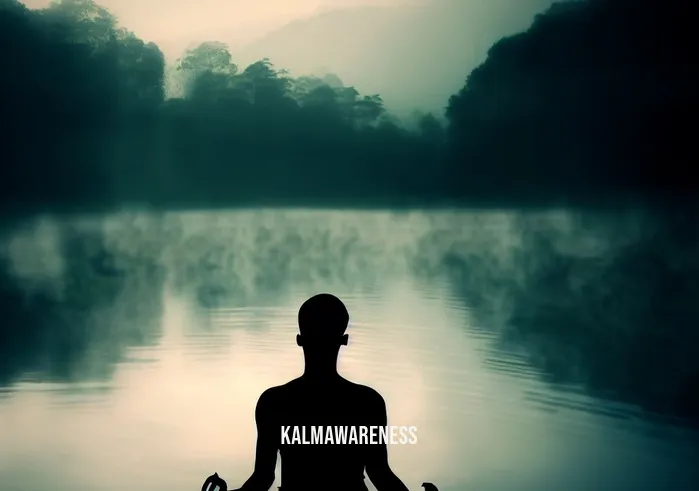The Wonders of Fall Back to Sleep Meditation for Better Slumber
Sleep is a vital element in maintaining good health, yet it remains an elusive necessity for many. You might be familiar with the frustration of waking up in the middle of the night and struggling to drift back into sleep. This experience could lead to insomnia, stress, and an overall decrease in the quality of life. However, there is a promising method to address this issue: fall back to sleep meditation. This form of meditation offers a myriad of benefits related to sleep, relaxation, and calm. Let’s delve into the foundational principles behind this technique and how it can be your gateway to a better bedtime routine.
The Anatomy of Sleep and Insomnia
Understanding the intricacies of sleep is the first step in appreciating how fall back to sleep meditation can help. Sleep consists of multiple cycles, including Rapid Eye Movement (REM) and Non-REM phases. Insomnia occurs when these cycles are interrupted or when one is unable to initiate sleep. Factors like stress, anxiety, and external disturbances can exacerbate sleep disruptions.
It’s worth noting that insomnia is not just an inconvenience; it can lead to severe health implications. Chronic sleep deprivation is linked to a variety of health issues such as high blood pressure, obesity, and mental health disorders. Therefore, finding an effective solution to improve sleep quality is of utmost importance.
The Core Concepts of Fall Back to Sleep Meditation
Meditation is a practice that involves attaining a peaceful state of mind in which thoughts are not occupied by worry. Fall back to sleep meditation combines this concept with focused breathing and relaxation techniques. The main objective is to create a mental environment that is conducive to sleep. By focusing on your breath and allowing your thoughts to drift, you signal to your body that it’s time to transition back into a sleep state.
Breathing and Its Significance
Breathing plays a pivotal role in any meditation practice. In fall back to sleep meditation, particular emphasis is placed on controlled, deep breathing. Practitioners usually follow a brief meditation on breath to instill a sense of calm and awareness. The act of focusing on each inhalation and exhalation serves as a mental anchor, preventing the mind from wandering into stress-inducing thoughts. This type of attention to breath is remarkably similar to the concept of “mind breaths,” which emphasizes the unity of mind and breath as a path to inner peace.
Integrating Mindfulness
The integration of mindfulness into this practice cannot be overstated. Being mindful means maintaining a moment-by-moment awareness of our thoughts, emotions, bodily sensations, and surrounding environment. Mindfulness has been prescribed for various conditions, including attention deficit hyperactivity disorder (ADHD), and its principles are highly beneficial in achieving quality sleep.
Potential Alternatives and Enhancements
While fall back to sleep meditation is highly effective, some individuals may want to explore additional techniques to complement their practice. For instance, floating meditation or mindful movement for sleep can be incorporated to amplify the effects. Furthermore, technological advancements have paved the way for EMDR meditation, a digital approach that may be especially appealing to those interested in tech-savvy solutions.
Conclusion and What’s Ahead
Fall back to sleep meditation is more than just a remedy for insomnia—it’s a holistic approach to improving your sleep, mental state, and overall well-being. By understanding its core principles, you can incorporate this technique into your bedtime routine, making it easier to drift back to sleep when those troublesome wakeful moments occur. In the next chapter, we will delve deeper into practical tips for implementing this form of meditation, along with exploring other fascinating aspects such as hand yoga poses and the benefits of binaural beats for migraine relief. Continue reading to enrich your understanding and to take another step toward restful nights.

The Art of Mastering Fall Back to Sleep Meditation: Techniques and Tools
Now that you have a foundational understanding of fall back to sleep meditation and its importance, it’s time to delve deeper into the advanced techniques and tools that can take your practice to the next level. This journey will enable you to improve your bedtime routine, increase relaxation, and achieve the tranquil sleep you’ve longed for.
The Importance of Position and Posture
Posture matters when it comes to any form of meditation. The right posture can enhance your focus, deepen your breath, and create a more harmonious flow of energy. While traditional sitting postures are common in meditation, it’s worth noting that you can also meditate while lying down. This adaptability makes fall back to sleep meditation particularly accessible for everyone, regardless of their physical condition or familiarity with meditation.
Key Postures to Consider
- Lotus Pose: Traditional and focused, ideal for those who are accustomed to seated meditation.
- Savasana (Corpse Pose): Perfect for practicing fall back to sleep meditation due to its supine position.
- Fetal Position: Mimics the natural position of sleep, creating a mental cue for the body to relax.
- Hand Yoga Poses: Hand yoga poses can also be integrated into your routine for an added layer of physical and mental focus.
The Role of Sound and Frequency
Sound therapy can be an effective supplement to fall back to sleep meditation. Many practitioners utilize the power of binaural beats for migraine relief and relaxation. Similarly, you might consider exploring the benefits of the 256 Hz frequency.
| Type of Sound | Frequency | Benefits |
|---|---|---|
| Binaural Beats | Various | Stress reduction, enhanced focus |
| 256 Hz | 256 Hz | Promotes deep healing and clears negative energy |
| Nature Sounds | N/A | Creates a calming atmosphere |
| White Noise | N/A | Masks external disturbances |
| Instrumental Music | N/A | Soothes the mind and elevates mood |
Breathing Techniques and Energetic Cleansing
Deepening your breathing techniques can significantly augment your fall back to sleep meditation. Clearing energy meditation techniques often involve special breathwork to eliminate negative energies and instill a sense of calm.
Breathing Exercises
- Box Breathing: Inhale for 4 seconds, hold for 4 seconds, exhale for 4 seconds, and hold for another 4 seconds.
- Diaphragmatic Breathing: Focus on filling the diaphragm rather than the chest.
- 4-7-8 Technique: Inhale for 4 seconds, hold the breath for 7 seconds, and exhale for 8 seconds.
Addressing Specific Conditions
For those with special circumstances, such as kids and individuals who suffer from anxiety, fall back to sleep meditation can still be tailored to meet your needs. For children, Kid Calm techniques can be adapted to make the practice more engaging and age-appropriate. Furthermore, in instances of acute anxiety, anxiety attack meditation can be integrated into your sleep meditation routine for immediate relief.
Ready for the Next Level?
Mastering the art of fall back to sleep meditation is not a one-time feat but an evolving process. It’s essential to adapt and experiment with new techniques and approaches to find what truly resonates with you. In the next chapter, we will delve into the scientific studies that back the effectiveness of fall back to sleep meditation, examine the interplay between sleep, meditation, and mental health, and explore how modern technology is revolutionizing the practice. Continue reading to deepen your understanding and refine your approach to achieving restful, rejuvenating sleep.

Discovering Hope Through Fall Back to Sleep Meditation: The Inspirational Journey
As we explore deeper into the techniques and benefits of fall back to sleep meditation, we should also understand that this practice is more than just a tool—it is a source of inspiration. The path to mastering restorative sleep through meditation is laden with self-discovery and unexpected, enriching life changes. This chapter aims to illuminate these aspects and offer some motivational guideposts to help you navigate this fulfilling journey.
Harnessing the Power of Mindful Movement
Incorporating mindful movements into your nighttime routine can offer not only physical benefits but also emotional relief, making it easier to fall back to sleep. If you find stillness challenging, consider incorporating practices like mindful movement sleep exercises that engage both your body and mind in a holistic manner.
“Mindfulness isn’t difficult; we just need to remember to do it.”
– Sharon Salzberg
The Art of Mindfulness: Beyond Sleep
While the primary aim is to improve your sleep, the practice of fall back to sleep meditation extends its benefits into various aspects of your life. The art of being present can reduce symptoms of adult ADHD, providing an alternative to conventional treatments. You can learn more about this by visiting The Mindfulness Prescription for Adult ADHD.
“The best way to capture moments is to pay attention. This is how we cultivate mindfulness.”
– Jon Kabat-Zinn
The Influence of EMDR in Sleep Meditation
Eye Movement Desensitization and Reprocessing (EMDR) has been primarily known for treating trauma. However, EMDR meditation techniques can be incorporated into your fall back to sleep meditation practice for enhanced emotional healing.
“The quieter you become, the more you can hear.”
– Ram Dass
Floating in Tranquility: The Ultimate Relaxation
Another unique way to find inspiration is through the experience of floating meditation. Immersing yourself in a zero-gravity environment frees the mind and can serve as an excellent supplement to your regular fall back to sleep meditation routine.
“Do not dwell in the past, do not dream of the future, concentrate the mind on the present moment.”
– Buddha
Relax, Be Aware, and Breathe
For those who are new to meditation or seeking a simplified approach, the principle is straightforward—relax and be aware. The essence of fall back to sleep meditation lies in relaxation, awareness, and the power of the breath.
“Breathing in, I calm body and mind. Breathing out, I smile. Dwelling in the present moment, I know this is the only moment.”
– Thich Nhat Hanh
What Awaits You in the Next Chapter?
While inspiration can fuel your journey, understanding the science and analytics behind fall back to sleep meditation can strengthen your practice with evidence-based knowledge. The next chapter will cover the clinical studies and research that support the practice’s benefits, delve into user testimonials, and explore some of the latest technological advancements that are redefining the landscape of sleep meditation. Continue reading to arm yourself with the knowledge that can help you achieve a more fulfilling and restorative sleep experience.

Unpacking the Science and Technique of Fall Back to Sleep Meditation
Now that we have established the intrinsic value and inspiration that fall back to sleep meditation offers, it’s time to delve into the science and technique behind this potent practice. Understanding the fundamentals can enhance your experience and provide a solid foundation for consistent, beneficial outcomes.
The Scientific Underpinning of Meditation and Sleep
To truly grasp the effectiveness of meditation for slumber, it’s crucial to understand what happens physiologically when you meditate. Here’s where 256 Hz benefits come into play. The frequency of 256 Hz is known to create an ambiance that facilitates deep meditation and enhances sleep quality. It provides an intriguing angle into how sound frequencies could be an essential part of your meditation routine.
What Does Science Say? Bullet Points:
- Improved REM Sleep: The phase of sleep that significantly impacts memory and learning.
- Reduces Cortisol Levels: Meditation helps in lowering the stress hormone.
- Mindfulness Increases Melatonin: The hormone responsible for regulating sleep.
Involving Your Whole Body in the Practice
You’re not just meditating with your mind; your body is an active participant in this transformative practice. Techniques such as soles of the feet meditation help you shift your focus to different parts of the body, anchoring your awareness and aiding in sleep.
Meditation Techniques to Engage the Body:
- Hand Yoga Poses: Incorporate hand yoga poses to channel energy flow.
- Breathing Exercises: Adopt a brief meditation on breath for better lung capacity and mental clarity.
- Energy Clearance: Use clearing energy meditation techniques to dispel negativity.
The Varying Forms of Meditation for Sleep
Not all meditation techniques are created equal, especially when targeting sleep-related issues. By learning about meditation for dummies, you can tailor your practice to your specific needs, enhancing your chance for better sleep.
List of Different Forms:
- Guided Meditation: You follow a guide, often via audio, directing you through a peaceful scene or series of muscle relaxation.
- Mantra Meditation: Repeating a mantra or word to center your focus.
- Breathing Meditation: Concentrating on your breath and recognizing its pathway as it moves in and out.
- Mindfulness Meditation: Observe your thoughts and emotions but letting them pass without judgment.
Kid-Friendly Approaches for a Family-Focused Routine
For parents yearning for a full night’s rest, introducing your kids to Kid Calm meditation can be a game-changer. Not only can this foster a lifelong skill, but it’s also a positive bedtime routine that benefits the entire family.
Tips for Introducing Kids to Meditation:
- Use Simple Language: Explain the process in terms kids can easily grasp.
- Start with Short Sessions: Kids have limited attention spans, so start small.
- Make it Fun: Use playful imagery or stories to engage their imagination.
What Awaits in the Final Chapter?
As we journey towards the conclusion of our exploration into fall back to sleep meditation, prepare to discover innovative ways to integrate this practice into your daily life. The final chapter will offer practical tips, actionable steps, and how-to guides to elevate your experience from good to great. Continue reading and equip yourself with the tools that will make falling back to sleep an effortlessly natural process.

Your Next Steps in Mastering Fall Back to Sleep Meditation
You’ve journeyed with us through the intricacies, scientific backing, and various techniques of fall back to sleep meditation. As we wrap up this enlightening exploration, let’s refocus on the key takeaways and gear up for a life of better sleep and peace of mind.
Revisiting the Essence of Tranquil Repose
Fall back to sleep meditation isn’t merely a band-aid for insomnia or disturbed sleep; it’s a holistic approach to wellness. Whether it’s the brainwave-altering impact studied in floating meditation or the emotionally freeing EMDR meditation, various forms can be tailored to meet your unique needs.
Your Quick Recap:
- Embrace Frequency: Sound waves like 256 Hz can enhance your meditative state.
- Engage Your Body: Techniques like hand yoga poses can make meditation more effective.
- Family Matters: Don’t forget that even kids can benefit from meditation techniques.
Lightening the Mood with a Touch of Humor
While sleep and relaxation are serious matters, a bit of levity can actually help lighten the emotional load, making practices like mindful movement sleep more accessible and enjoyable.
Laughter and Sleep: An Odd Couple?
You might find it odd to think of laughter in the context of restful sleep. Yet, a sense of joy can work wonders for your sleep quality. Remember, tranquility and a good laugh are not mutually exclusive!
Your Call-to-Action: Stay Engaged, Stay Informed
You’ve ventured far into the realm of fall back to sleep meditation, but don’t let the journey end here. Feel free to explore other related topics, such as relax and be aware or how to deal with anxiety attacks through meditation. If some sections were complex, revisit them for better clarity. Your sleep health is a lifelong commitment, deserving of ongoing exploration and adaptation.
Thank You for Being a Part of This Journey
Finally, we can’t end without expressing our sincere gratitude. Thank you for investing your time and mental energy into understanding the power of fall back to sleep meditation. As you implement what you’ve learned, rest assured (literally!) that you’re taking steps toward a healthier, more balanced life.
Look Out for More Insightful Content!
Stay tuned for more in-depth articles, tips, and explorations in our future editions. The journey into peaceful slumber and holistic wellness is far from over. With practices as potent as U-Relax moving, the scope for learning and personal growth is boundless.
Farewell, Until We Meet Again
As we close this chapter, let’s keep the dialogue open. Take what you’ve learned here to build your personalized, sleep-inducing meditation regimen. Remember, the best way to understand the impact of fall back to sleep meditation is to experience it. So why wait? Tonight could be the night where you truly achieve that elusive restorative sleep. Sweet dreams and peaceful meditation to you all!





